You might wonder about water safety when visiting San Miguel de Allende, a charming colonial city in Mexico. While the local tap water is treated, it’s not recommended for direct consumption by travelers. Your best approach is to drink bottled water, use sealed water for brushing teeth, and be cautious with ice cubes and raw produce. Potential health risks include bacterial contamination that could cause traveler’s diarrhea or other digestive issues. By following simple precautions, you can enjoy your trip to this beautiful destination without compromising your health and well-being.
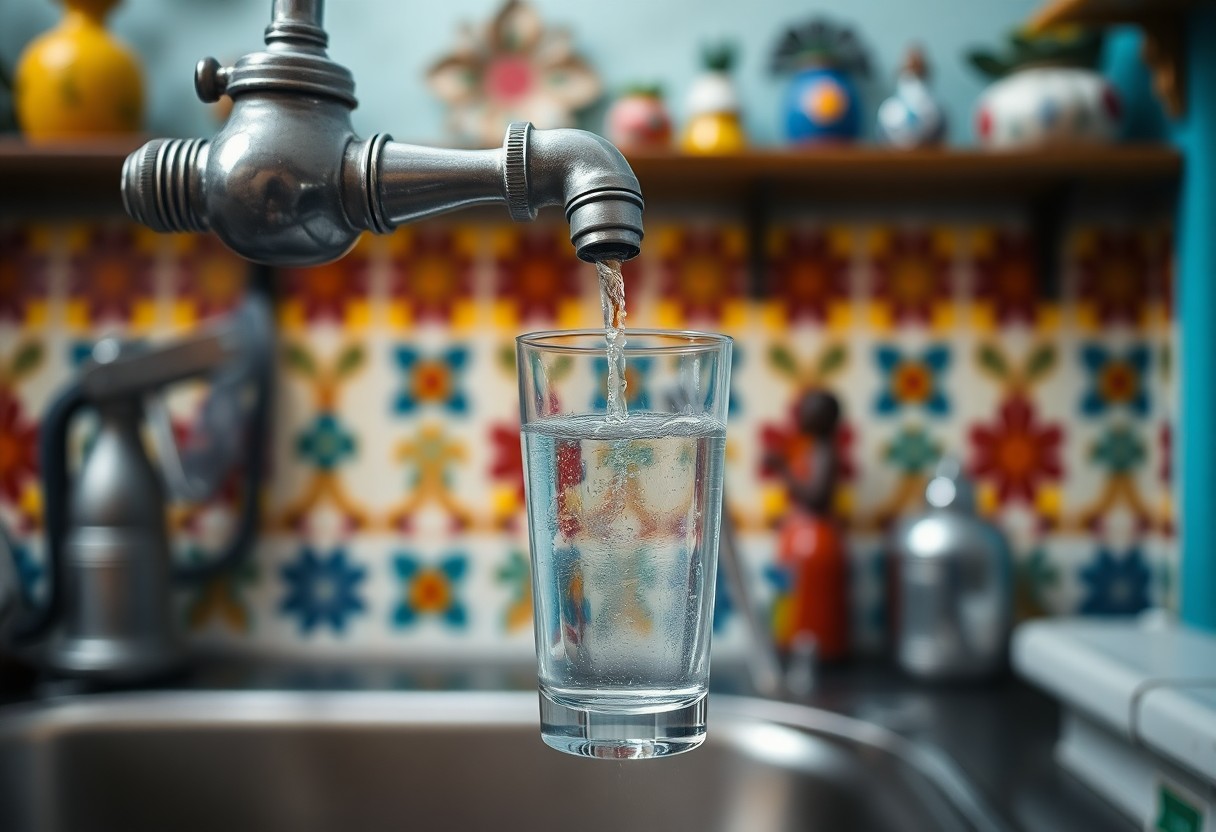
Understanding Water Safety in San Miguel de Allende
Before traveling to San Miguel de Allende, you should understand the nuanced water safety landscape. Tap water in this historic city is generally not considered safe for direct consumption. Your health depends on making informed decisions about water sources, understanding local infrastructure, and adopting preventive strategies. While the city has improved its water treatment systems, potential contaminants and aging pipelines pose risks that travelers must carefully navigate.
Overview of Water Quality in San Miguel de Allende
Before exploring San Miguel, you’ll want to know about its water quality challenges. Municipal water systems often contain bacteria, parasites, and potential microorganisms that can cause digestive issues. Your safety hinges on understanding local water treatment processes and recognizing that infrastructure varies across different city neighborhoods.
Common Waterborne Illnesses in Mexico
Above all, you should be aware of potential waterborne health risks in Mexico. Travelers frequently encounter conditions like traveler’s diarrhea, hepatitis A, and typhoid when consuming untreated water. These illnesses can quickly derail your travel plans and require immediate medical attention.
Mexico experiences significant waterborne disease challenges due to inconsistent water treatment infrastructure. Parasitic infections like giardiasis and cryptosporidiosis are particularly prevalent. Rural and urban areas demonstrate varying levels of water contamination, with younger children and travelers being most susceptible to these health risks.
The Role of Tourism in Water Awareness
Common tourism practices significantly impact water safety understanding in San Miguel de Allende. Informed travelers help promote better water management practices by choosing bottled water, using water purification methods, and supporting local infrastructure improvements.
Miguel’s tourism sector plays a transformative role in water safety education. Travelers bringing awareness about water treatment technologies and hygiene practices contribute to long-term community health improvements. By sharing knowledge and supporting local initiatives, you can help enhance water quality standards and protect both visitors and residents.
Is Tap Water Safe?
Clearly, understanding tap water safety in San Miguel de Allende requires careful consideration. You should be aware that the municipal water system presents potential health risks. While infrastructure exists, water quality can vary significantly between different neighborhoods, potentially exposing you to contaminants like bacteria and parasites. Your best approach involves taking precautionary measures to protect your health during your stay.
Official Guidelines from Health Authorities
From local health departments, official recommendations suggest treating tap water before consumption. You will find guidelines emphasizing the importance of boiling water for at least one minute or using reliable purification methods. These official sources consistently advise tourists and residents to exercise caution when accessing municipal water supplies.
Realities of Tap Water Safety in Local Context
Between aging infrastructure and inconsistent water treatment processes, San Miguel de Allende’s water system presents complex challenges. You might encounter varying water quality levels depending on your specific location. Factors like pipe conditions, treatment facility performance, and local environmental conditions directly impact water safety.
Safe drinking water requires comprehensive understanding of local conditions. Your potential exposure to waterborne pathogens depends on multiple interconnected factors. Municipal water treatment facilities in San Miguel struggle with maintaining consistent purification standards, which means water quality can fluctuate dramatically across different city zones.
Testimonials from Locals and Expats
Context from residents reveals mixed experiences with tap water. You will hear recommendations ranging from complete avoidance to selective usage. Many long-term expatriates and locals suggest using filtered or bottled water as a standard preventative measure.
Consequently, personal experiences highlight the nuanced nature of water safety. You might find that some neighborhoods have more reliable water systems than others. Experienced residents often invest in advanced filtration systems or rely on bottled water delivery services to mitigate potential health risks associated with municipal water supplies.
Bottled Water & Filtration Options
Keep safe drinking water accessible during your San Miguel de Allende visit by exploring multiple hydration strategies. You’ll find numerous options to ensure you stay healthy, including purchasing bottled water and utilizing home filtration systems. Reliable water sources are important for preventing potential health risks, so understanding your choices will help you make informed decisions about water consumption.
Popular Brands of Bottled Water
Any traveler in San Miguel de Allende will find several trustworthy bottled water brands like Bonafont, Ciel, and Pureza. You can easily purchase these at local stores, supermarkets, and convenience shops. These brands undergo strict quality control, ensuring safe drinking water for you during your stay.
Home Filtration Systems: What You Need to Know
About home filtration, you have multiple options to purify water effectively. Reverse osmosis systems and ceramic filters are popular choices for travelers and residents in San Miguel de Allende. These systems can remove contaminants and provide clean drinking water directly from your tap.
Understanding home filtration requires comprehensive knowledge of water treatment technologies. You’ll want to consider factors like filter lifespan, maintenance requirements, and effectiveness against local water contaminants. Professional installation can ensure optimal performance and water quality in your living space.
Cost Comparison: Bottled Water vs. Filtered Water
Filtration options present interesting economic considerations for your water consumption. Here’s a comparative breakdown:
| Water Source | Estimated Monthly Cost |
|---|---|
| Bottled Water | $30-$50 |
| Home Filtration | $10-$25 |
This detailed cost analysis reveals that home filtration systems can provide significant savings over time. You’ll not only reduce expenses but also minimize plastic waste, making it an environmentally conscious choice for your water needs in San Miguel de Allende.
What About Ice & Restaurants?
Once again, navigating water safety in San Miguel de Allende extends beyond drinking directly from the tap. When dining out, you’ll want to be aware of potential water-related risks that could impact your dining experience and health.
Ice Safety in Restaurants and Cafes
Below the surface of seemingly refreshing drinks, ice can pose hidden health risks. Many restaurants in San Miguel use purified or filtered water for ice production, but you should always ask about their water source to ensure your safety.
Cuisine Practices: Cooking and Water Usage
Among the necessary considerations for dining in San Miguel, water used in food preparation is a critical health factor. Professional kitchens typically use purified water for washing produce, cooking, and general food preparation to minimize contamination risks.
Consequently, most reputable restaurants in San Miguel de Allende follow strict hygiene protocols. High-end establishments and those catering to tourists are particularly vigilant about water quality, using advanced filtration systems and ensuring that all ingredients are thoroughly cleaned with safe water.
Strategies for Choosing Safe Dining Options
Between your desire to explore local cuisine and maintaining health, you can adopt several strategies. Look for restaurants with good reputations, observe their cleanliness, and don’t hesitate to ask about their water and food preparation methods.
To minimize risks, you should prioritize dining at well-established restaurants, those recommended by locals or trusted travel guides. Opt for cooked foods over raw preparations, and consider establishments that visibly demonstrate commitment to hygiene and water safety standards.
Here’s the content for the specified sections:
Water Quality Comparisons with Other Mexican Cities
To understand San Miguel de Allende’s water quality, you’ll want to compare it with other Mexican cities. The following table provides a comprehensive overview:
| City | Water Quality Rating |
|---|---|
| San Miguel de Allende | Moderate (Caution Advised) |
| Mexico City | Low Quality |
| Guadalajara | Moderate Quality |
Comparison to Mexico City and Guadalajara
Above other major Mexican cities, San Miguel de Allende presents a unique water quality profile. The comparative table highlights key differences:
| Parameter | Comparison Detail |
|---|---|
| Mineral Content | Higher in San Miguel |
| Contaminant Levels | Lower than Mexico City |
Insights from Other Popular Tourist Destinations
Tourist destinations across Mexico offer varied water quality experiences. You’ll find significant variations in municipal water treatment standards and infrastructure.
Comparisons reveal that tourist-heavy locations often invest more in water infrastructure. Cities like Cancun and Puerto Vallarta typically maintain higher water treatment standards, benefiting international visitors with more reliable water systems.
Lessons Learned from Travel Experiences
Comparison of traveler experiences suggests diverse water quality perceptions. You should approach local water consumption with informed caution.
With personal travel narratives, you’ll discover that water safety depends on multiple factors. Local infrastructure, treatment processes, and regional geological conditions significantly influence water quality. Experienced travelers recommend using bottled water and portable filtration systems to mitigate potential health risks.
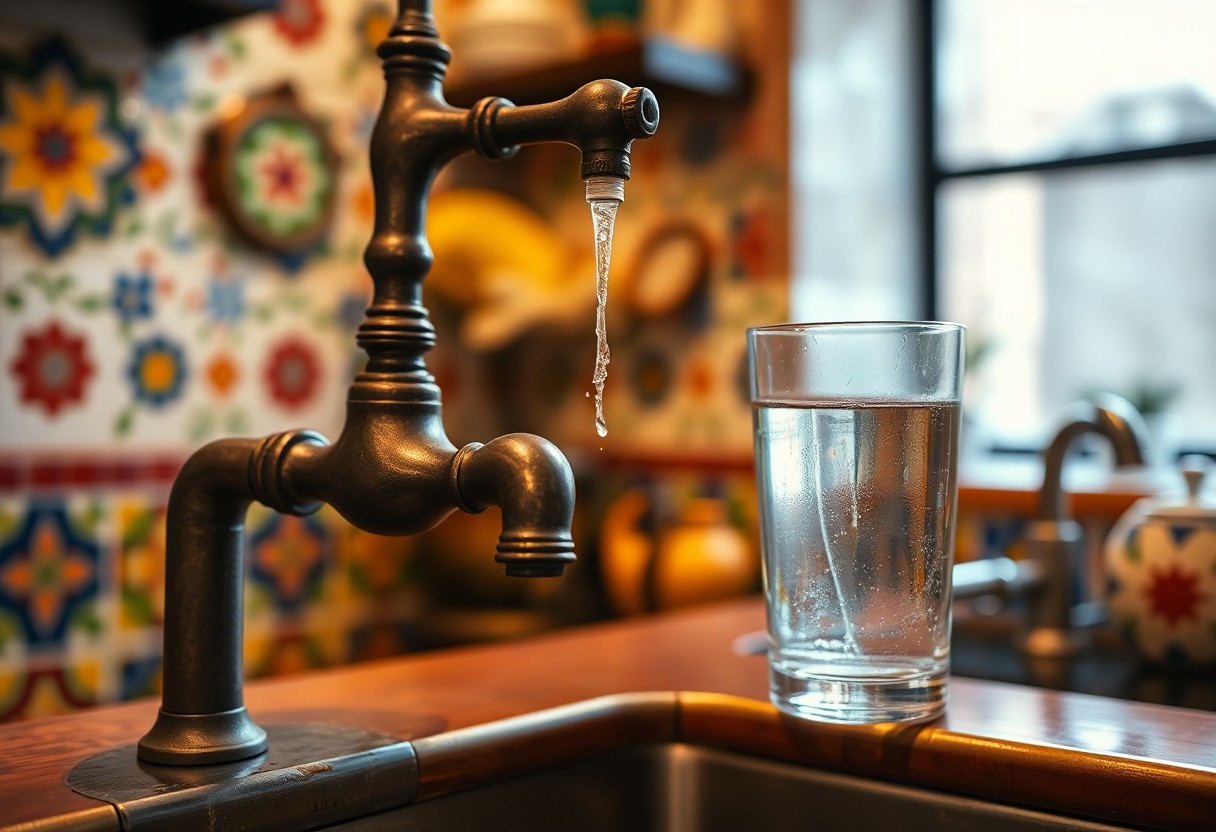
Local Regulations and Standards
Not all water regulations in San Miguel de Allende are uniformly enforced. Local municipal authorities have established guidelines for water management, but implementation varies across different districts. You’ll find that compliance depends on multiple factors, including infrastructure age and local government investment in water treatment systems.
Government Efforts in Improving Water Quality
Beside ongoing infrastructure upgrades, San Miguel’s government has invested significantly in water treatment technologies. You can observe their commitment through periodic water quality testing and gradual improvements in municipal water systems. Their strategies focus on reducing contamination risks and enhancing overall water safety for residents and visitors.
Compliance Standards for Restaurants and Businesses
Quality control measures for food establishments in San Miguel are stringent. Health departments mandate regular water testing and filtration protocols for restaurants, cafes, and food service businesses. You should expect these venues to follow strict guidelines to ensure customer safety and maintain high hygiene standards.
Understanding compliance standards involves comprehensive health regulations. Restaurants must demonstrate regular water quality documentation, including bacterial testing, filtration system maintenance, and adherence to national health codes. You’ll find that businesses undergo periodic inspections to verify their water safety protocols.
Historical Context of Water Quality in the Region
By examining San Miguel’s water infrastructure history, you’ll discover significant improvements in water management. Colonial-era water systems have been gradually modernized, addressing historical challenges of contamination and limited treatment capabilities.
And the evolution of water quality reflects broader urban development trends. Infrastructure investments have transformed water safety over decades, with technological advancements and increased governmental oversight playing critical roles. You can trace the progression from rudimentary water systems to more sophisticated, regulated networks.
The Role of Local Organizations and NGOs
Your local organizations in San Miguel de Allende play a vital role in addressing water safety and quality challenges. Community-driven initiatives work tirelessly to improve infrastructure, water treatment, and public health standards. These groups collaborate with municipal authorities to implement sustainable solutions that protect residents and visitors from potential waterborne risks.
Community Projects Focused on Water Safety
NGOs in San Miguel de Allende have developed targeted projects addressing water contamination prevention. They conduct regular water quality testing, support infrastructure improvements, and work directly with local communities to enhance water safety protocols. Their grassroots approach ensures comprehensive monitoring and intervention strategies.
Collaborations with International Agencies
Behind the scenes, local water safety organizations partner with international health and environmental agencies. These collaborations bring expert knowledge and resources to San Miguel, enabling more sophisticated water treatment and monitoring techniques.
Considering the complexity of water management, these international partnerships provide technical assistance, funding, and advanced scientific expertise. They help develop comprehensive strategies for water purification, infrastructure development, and long-term sustainability in San Miguel de Allende.
Educating Residents and Tourists Alike
Behind every successful water safety initiative lies effective education. Local organizations develop comprehensive awareness programs that inform both residents and tourists about water consumption best practices and potential health risks.
International health organizations and local groups collaborate to create multilingual educational materials. These resources provide detailed guidance on water safety, filtration methods, and preventive health measures, ensuring that you can make informed decisions about water consumption in San Miguel de Allende.
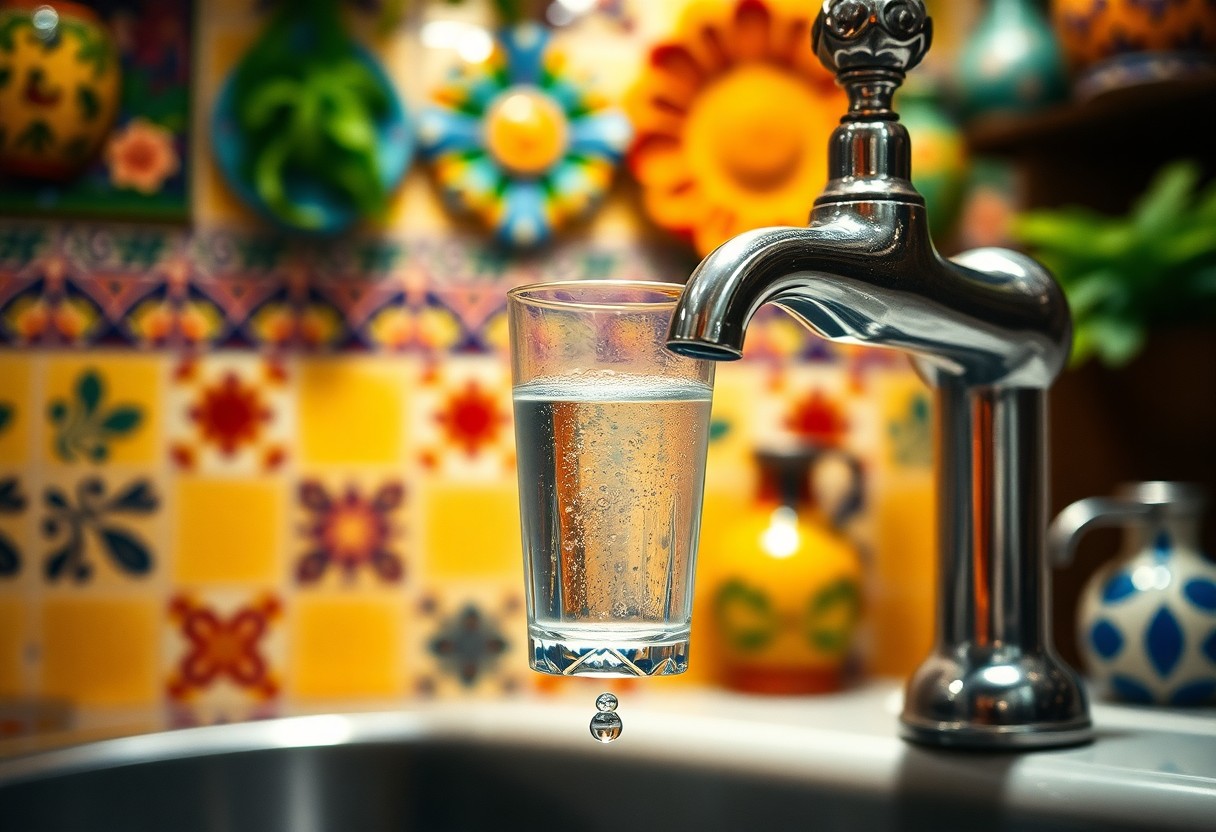
How to Test Water Quality at Home
Despite the importance of water safety, you can take proactive steps to assess your water quality in San Miguel de Allende. Home testing provides an initial screening for potential contaminants, helping you understand the water you’re consuming. By using various methods, you can gain insights into your water’s safety before seeking professional analysis.
DIY Water Quality Test Kits
Test kits available in local pharmacies or online can help you quickly evaluate your water. These affordable tools detect common contaminants like bacteria, lead, and chlorine. You’ll typically find simple strip-based tests or digital meters that provide rapid results, allowing you to make immediate decisions about your water consumption in San Miguel de Allende.
Professional Testing Services Available
The local environmental health departments and specialized laboratories in San Miguel offer comprehensive water testing services. Professionals can conduct detailed analyses that home kits cannot, examining a wide range of potential water quality issues with advanced scientific equipment.
Hence, professional water testing provides a more comprehensive evaluation of your water quality. Certified technicians use sophisticated methods to detect microscopic contaminants, heavy metals, and potential health risks that might not be visible through basic home testing. These services offer a thorough assessment of your water’s safety, giving you peace of mind about your drinking water in San Miguel de Allende.
Interpreting Water Quality Test Results
On receiving your test results, you’ll need to understand what the numbers mean. Safe water parameters include specific acceptable ranges for various contaminants. Local health guidelines can help you interpret whether your water meets recommended safety standards.
Quality water test results require careful interpretation. Each parameter indicates a different potential health risk. You should consult local health professionals or water quality experts in San Miguel de Allende to fully understand the implications of your specific test results, ensuring you take appropriate actions to protect your health.
Staying Hydrated: Alternative Sources of Water
After exploring tap water safety, you’ll want to know about alternative hydration options in San Miguel de Allende. Bottled water remains your safest bet, available in most restaurants, stores, and street vendors. Purified water dispensers (known locally as “garrafones”) offer reliable drinking water that you can purchase from convenience stores and supermarkets. Consider carrying a reusable water bottle and refilling it from these trusted sources to ensure your hydration needs are met while traveling.
Natural Water Sources: What to Avoid
Water from natural streams, rivers, or public fountains in San Miguel de Allende should be strictly avoided. These sources can contain harmful bacteria, parasites, and contaminants that might cause serious gastrointestinal issues. Your health is paramount, so always verify the water’s origin before consuming. Even seemingly clean natural water sources can pose significant risks to travelers unfamiliar with local environmental conditions.
Health Benefits of Proper Hydration
Any traveler in San Miguel de Allende should prioritize staying hydrated. Proper hydration supports your immune system, helps regulate body temperature, and ensures optimal physical and mental performance during your exploration of this beautiful city. Drinking adequate water can prevent fatigue, headaches, and maintain your overall well-being in the high-altitude environment.
Due to San Miguel’s elevation at approximately 6,200 feet, your body requires more hydration than at sea level. The dry climate and higher altitude increase water loss through respiration and perspiration. Maintaining proper fluid intake helps prevent altitude-related symptoms like dizziness, shortness of breath, and potential dehydration. Your body will adapt more quickly to the environment when you consistently consume sufficient water.
Importance of Drinking Enough Water Daily
Along with preventing dehydration, drinking enough water supports your digestive system and helps flush out toxins. In San Miguel’s warm climate, you’ll need to consume more water than you might typically drink at home. Aim for at least 8-10 glasses daily, adjusting based on your activity level and sun exposure.
Health experts recommend monitoring your hydration through urine color and frequency. Light-colored urine indicates proper hydration, while dark yellow suggests you need to increase your water intake. Your body’s hydration needs can vary depending on factors like physical activity, temperature, and individual metabolism. Pay attention to your body’s signals and drink water proactively, especially when exploring San Miguel de Allende’s charming streets and attractions.
What to Do If You Get Sick
Unlike other travel scenarios, getting sick in San Miguel de Allende requires swift and strategic action. Your health should be your top priority. If you experience symptoms of waterborne illness, immediately stop consuming local water, switch to bottled water, and begin monitoring your condition. You’ll want to rest, avoid strenuous activities, and focus on recovery. Your body needs time to fight off potential bacterial or parasitic infections that might have entered your system through contaminated water sources.
Recognizing Symptoms of Waterborne Illness
At the first sign of illness, you should be alert to specific symptoms. Severe diarrhea, persistent vomiting, abdominal cramps, and fever are primary indicators of potential waterborne diseases. These symptoms can develop within hours or days after exposure to contaminated water. Pay close attention to your body’s signals and track the duration and intensity of your symptoms, as this information will be valuable if you need medical consultation.
Rehydration Solutions and Remedies
Above all, preventing dehydration is critical. Oral rehydration solutions like Pedialyte or homemade electrolyte mixtures can help replace lost fluids and minerals. You should consume these solutions frequently in small amounts, avoiding large quantities that might trigger further stomach distress. Stick to clear liquids and gradually reintroduce bland foods as your condition stabilizes.
But hydration goes beyond just drinking fluids. You’ll need a strategic approach to replenishing electrolytes. Consider using commercial rehydration packets specifically designed for travelers, which contain precise mineral balances. Some pharmacies in San Miguel de Allende stock these solutions, making them easily accessible. Avoid sugary drinks and alcohol, as they can worsen dehydration and complicate your recovery process.
When to Seek Medical Help
Recognizing when professional medical intervention is necessary can be lifesaving. Persistent symptoms lasting more than 48-72 hours, signs of severe dehydration, or the presence of blood in your stool are clear indicators that you should seek immediate medical attention. Local clinics in San Miguel de Allende are equipped to handle traveler’s illnesses and can provide rapid, effective treatment.
Even minor symptoms can escalate quickly in a foreign environment. Professional medical assessment might reveal underlying conditions that require specialized treatment. San Miguel de Allende has several reputable medical facilities with English-speaking staff who understand traveler’s health concerns. Don’t hesitate to visit a clinic if your symptoms are severe or prolonged, as early intervention can prevent more serious health complications.
Packing for Your Trip: Water Safety Essentials
Many travelers to San Miguel de Allende should prioritize water safety by packing vital items. You’ll want to bring water purification tools like portable filters, water purification tablets, and a reusable water bottle with built-in filtration. These items will help you stay hydrated and protect your health while exploring this beautiful Mexican destination.
Recommended Products for Travelers
Beside water safety gear, consider packing UV water purifiers, filtered water bottles, and compact water treatment systems. SteriPEN, LifeStraw, and Grayl water bottles are excellent choices for travelers seeking reliable water purification methods in San Miguel de Allende.
Personal Hygiene and Water Practices
Water management is critical when traveling in San Miguel de Allende. You should avoid tap water for drinking, brushing teeth, and washing dishes. Opt for bottled or properly treated water to minimize health risks associated with local water contamination.
Personal water practices require careful attention in San Miguel de Allende. You’ll want to be vigilant about water sources, ensuring you use sealed bottled water for all consumption. When dining out, request beverages without ice and verify water used in food preparation.
Tips for First-Time Visitors
Visitors to San Miguel de Allende should follow these water safety guidelines:
- Always drink bottled water
- Use sealed water bottles from reputable sources
- Check water seal integrity before consuming
- Avoid ice in drinks
Any deviation from these guidelines could compromise your health.
Trip preparation involves understanding local water conditions. Consider these additional recommendations:
- Pack multiple water purification methods
- Research local water quality before arrival
- Carry extra water treatment supplies
- Consult travel health professionals
Any proactive approach will enhance your travel safety.
FAQs about Drinking Water in San Miguel de Allende
For travelers visiting San Miguel de Allende, understanding water safety is important. You’ll want to know the specifics about drinking water to ensure a healthy and enjoyable trip. Common questions revolve around tap water safety, bottled water availability, and potential health risks. Knowing the right precautions can help you navigate hydration challenges and make informed decisions about your water consumption during your stay.
Common Concerns Addressed
The primary concerns for visitors typically involve potential waterborne illnesses and the safety of local water sources. You might worry about drinking tap water, ice cubes, or consuming fresh produce washed in local water. Understanding the municipal water treatment processes and recommended precautions can help you minimize health risks and enjoy your time in San Miguel de Allende with confidence.
Connecting with Local Experts for Advice
Along your journey, seeking guidance from local health professionals and experienced expatriates can provide valuable insights into water safety. You’ll find that local knowledge is invaluable for understanding the nuanced aspects of water consumption in San Miguel de Allende.
For instance, connecting with local healthcare providers, expat community groups, and tourism offices can offer you up-to-date information. They can provide specific recommendations about water filtration, safe drinking practices, and current health advisories that might affect your water consumption strategies.
Resources for Further Information
About water safety in San Miguel de Allende, you’ll find numerous online and offline resources to help you stay informed. Reliable websites, travel forums, and local health departments can provide comprehensive guidance on water-related health precautions.
Addressed through comprehensive research, these resources offer detailed insights into water quality, treatment methods, and safety recommendations. You can access municipal water reports, expatriate forums, and travel health websites to gather the most current information about drinking water in San Miguel de Allende.
The Impact of Climate on Water Safety
Now, climate plays a significant role in determining water safety in San Miguel de Allende. You’ll find that local environmental conditions directly influence water quality and potential contamination risks. Understanding these dynamics helps you make informed decisions about water consumption and protection during your visit to this historic Mexican city.
Seasonal Changes and Water Quality
Below the surface, seasonal variations dramatically affect water safety in San Miguel de Allende. During rainy months, you might encounter increased runoff that can introduce contaminants into water systems. Your awareness of these seasonal shifts can help you take appropriate precautions to maintain your health while enjoying the city’s unique environment.
Effects of Drought and Water Management
Above all, drought conditions significantly impact water infrastructure in San Miguel de Allende. Water scarcity can compromise treatment processes and increase the concentration of potential pollutants. You should be particularly cautious during extended dry periods when water resources become more strained.
This prolonged water management challenge in San Miguel de Allende creates complex environmental pressures. Municipal water systems struggle to maintain consistent quality during extended drought periods. You’ll find that water treatment facilities must adapt to reduced water volumes, potentially increasing the risk of contamination and reducing overall water safety standards.
Long-Term Environmental Considerations
For visitors and residents alike, long-term environmental trends in San Miguel de Allende present ongoing water safety challenges. Climate change impacts water resources and infrastructure, requiring continuous monitoring and adaptive strategies to ensure safe water consumption.
In addition to immediate concerns, San Miguel de Allende faces complex long-term water management issues. Groundwater depletion and changing precipitation patterns require sophisticated environmental strategies. You’ll need to stay informed about local water treatment developments and potential risks associated with evolving climate conditions in this historic region.
Final Thoughts on Staying Healthy
All travelers to San Miguel de Allende should prioritize their health by being proactive and informed. Drink bottled or filtered water, avoid ice in street vendors, and be cautious with street food to minimize risks. Your best defense is preparation: pack a basic medical kit, consider travel insurance, and stay aware of your surroundings. Enjoy the vibrant culture while maintaining sensible health precautions. By following these guidelines, you’ll significantly reduce the chance of illness and ensure a memorable, safe experience in this beautiful Mexican destination.
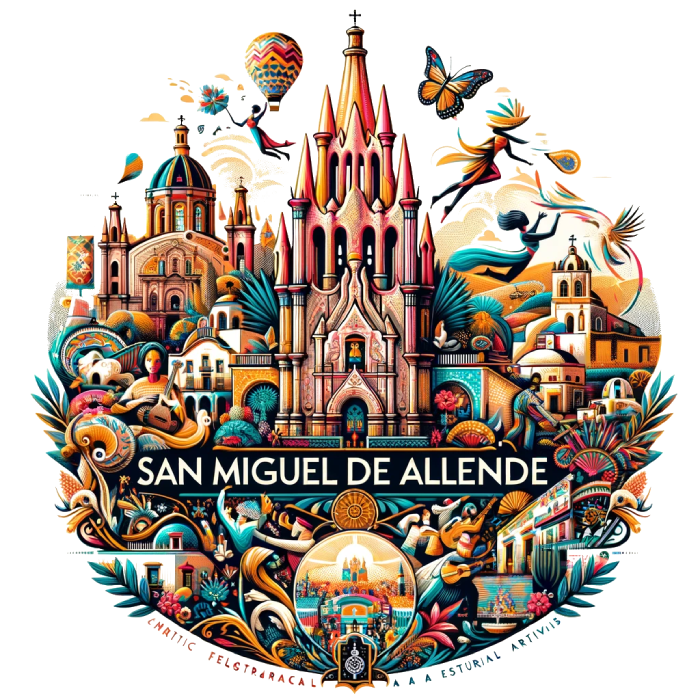


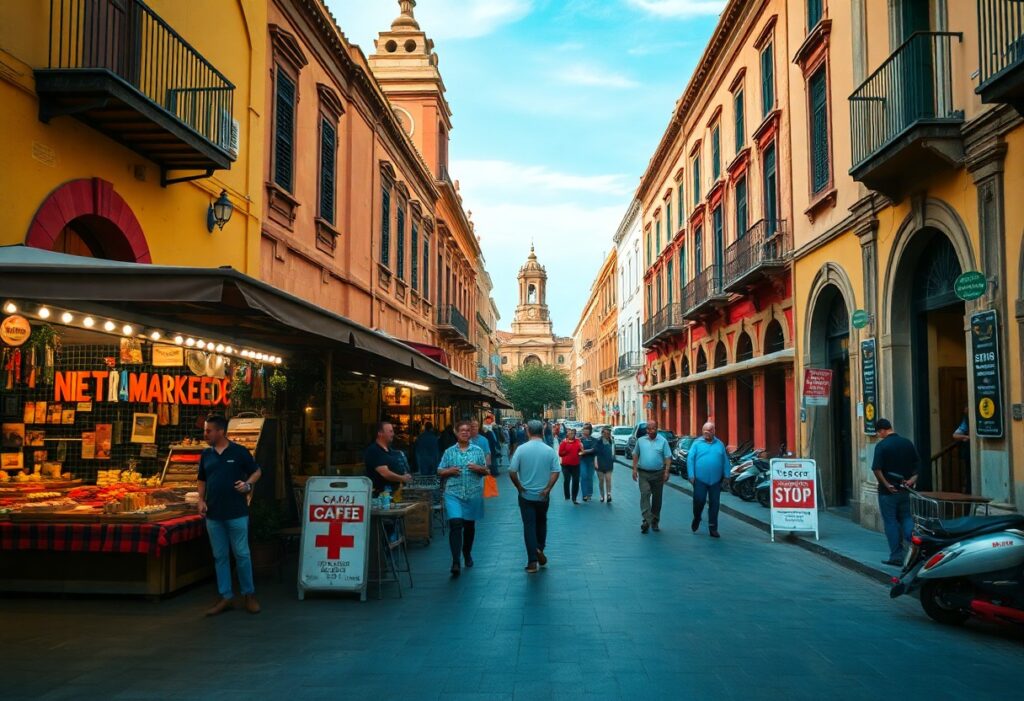
I really appreciate you shedding light on such an important topic! Water safety is often an overlooked aspect when traveling, and your insights are especially relevant when it comes to a charming place like San Miguel de Allende. Having visited a few times myself, I remember how much I enjoyed wandering those beautiful streets, taking in the stunning architecture and vibrant culture. However, the issue of water safety lingered in the back of my mind, and the tips you’ve shared resonate with my own experiences.
It’s great to hear that you’ve had the opportunity to explore San Miguel de Allende and appreciate its unique charm. That mix of stunning architecture and vibrant culture really draws people in, doesn’t it? Water safety is one of those things that can be easily overlooked when you’re caught up in the beauty of a place, but it’s essential for a smooth trip.
I appreciate the insights you’ve shared about water safety in San Miguel de Allende. It’s a topic that often doesn’t get enough attention from travelers. I visited the city last year, and I was surprised at how easily we can overlook something as fundamental as drinking water while exploring a new place.
It’s fascinating how the seemingly simple act of drinking water can serve as a reminder of the broader challenges travelers face regarding health and safety in different environments. When I visited San Miguel de Allende, I initially underestimated the importance of paying attention to water quality. I quickly learned that little adjustments—like using bottled water and being careful with fresh produce—can make a big difference in safeguarding our health.
It’s interesting to see the emphasis on water safety in San Miguel de Allende, as it highlights the blend of cultural exploration and health consciousness that comes with travel. I remember my own visit there—trying to navigate the local cuisine while keeping hydrated, all while soaking in the vibrant atmosphere of the city.
I appreciate you sharing your experience in San Miguel de Allende. It’s fascinating how the city encourages us to be mindful of both our health and our cultural adventures. Navigating the local cuisine can be an adventure in itself, can’t it? The rich flavors and ingredients are part of what makes that region so special, but balancing it all with hydration can be a bit of a challenge.
Your insights into water safety in San Miguel de Allende highlight a critical aspect of travel that many overlook—especially in a place with such rich history and culture. Having traveled to various regions in Mexico, I’ve realized that this caution is not just limited to San Miguel but a general guideline across many destinations.
Your observation about water safety in San Miguel de Allende resonates with many travelers who may not think twice about drinking water when exploring places rich in culture and history. It’s true; understanding water safety can feel like an afterthought, yet it plays a crucial role in ensuring a smooth trip.
This is such an important topic, especially for first-time visitors to places like San Miguel de Allende. I remember when I traveled to Mexico a few years back, I was taken aback by how different the water situation can be compared to what we’re used to back home. In my experience, sticking to bottled water was a game-changer, and I couldn’t agree more with your recommendations.
It’s great to hear about your experience with the water situation in Mexico! Many first-time visitors find it surprising how different it can be from what they’re used to. Bottled water often becomes a go-to choice, especially when exploring towns like San Miguel de Allende. Beyond just staying hydrated, it can also open up the opportunity to try local beverages, like aguas frescas or a good mezcal, which can be refreshing and a fun way to experience the culture. Have you had a chance to try any local dishes or drinks that you enjoyed while you were there? It’s fascinating how food and drink can give such insight into a place’s heritage.
I appreciate your comprehensive overview of water safety in San Miguel de Allende. It’s such a beautiful city rich in culture and history, but as you’ve pointed out, it’s important for travelers to be aware of the local water conditions. When I visited a couple of years ago, I made sure to bring a reusable water bottle and refill it with bottled water throughout my stay. This not only helped avoid any potential issues but also greatly reduced my plastic waste, which was an important personal goal for me.
You nailed it with the reusable water bottle strategy. It’s like having a trusty sidekick during your San Miguel adventures. I mean, who wouldn’t want to sip in style while dodging potential tummy troubles? It’s a smart move that combines both practicality and eco-friendliness — I’d argue that’s more heroic than most things I did on my trip!
It’s notable how frequently safety around drinking water comes up for travelers, especially in places with rich histories like San Miguel de Allende. Having traveled to several parts of Mexico, I’ve seen varying standards of water treatment, which makes it all the more crucial to approach this topic with caution. I once made the mistake of assuming that all bottled water was created equal and ended up with a case of traveler’s diarrhea, which definitely put a damper on my trip.
You raise a really important point about the varying standards of drinking water in different parts of Mexico. It’s interesting how places like San Miguel de Allende, with their rich histories and vibrant cultures, can have such diverse experiences, especially when it comes to something as fundamental as water.
Your insights on water safety in San Miguel de Allende are essential for anyone planning to visit! I remember my own experience traveling in Mexico where I learned the hard way about the risks of drinking tap water. Adopting practices like using bottled water and being cautious with ice or raw produce is not just about avoiding discomfort; it’s also a way of respecting the local infrastructure.